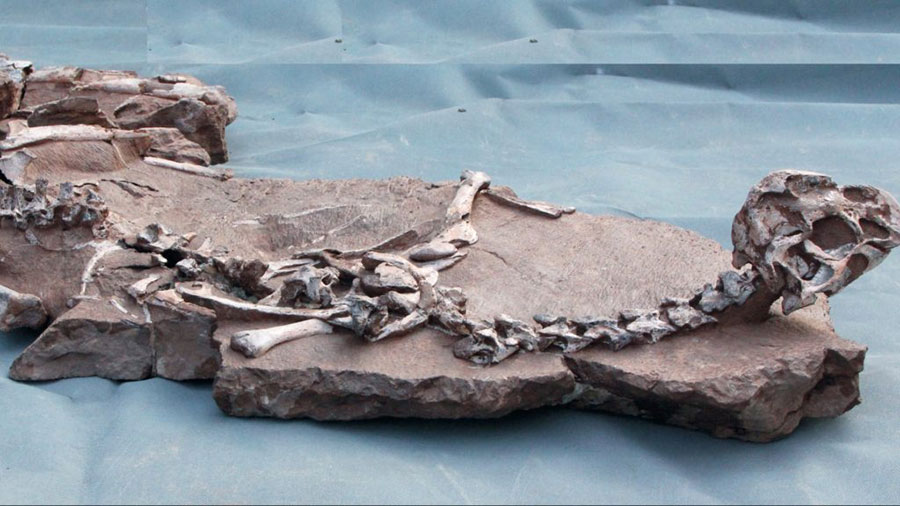HONG KONG – A group of Chinese workers who were excavating a hill for the construction of a new school, discovered the remains of a 72 million years old dinosaur. In fact, they almost destroyed the fossils unintentionally with the use of dynamite. For the luck of the anthropologists, it wasn’t a full loss.
The fossils of the dinosaur were unearthed after the explosion of TNT on the surrounding rocks. This caused the complete loss of some parts of the animal. The arms, hind leg, and tail were utterly destroyed by the blast, and even one of the drill holes passed close to the animal’s pelvic girdle, taking a chunk of fossil with it. According to the scientists, the vital parts that are needed to make all the relevant studies are still conserved, which are good news to the anthropologic community.

About the “mud dragon.”
This dinosaur named Tongtianlong limosus was an ancestor of modern birds. This feathered and winged creature is estimated to be from the Cretaceous Period, making it about 66 to 72 million years old. It belongs to the oviraptorosaurs, a group of dinosaurs that had shortened and toothless skulls and sharp beaks. This mud dragon was about the size of a large sheep or a small donkey. One of the most characteristic features that distinguishes this specimen is the crest, an ornamental feature used to either intimidate rivals or attract mates.
This species is the sixth to be found in the Ganzhou are of southern China and appears to be in its golden age related to discoveries of fossils. Steve Brussate, of the University of Edinburgh’s School of Geosciences, said that this particular region was a very dynamic and active environment because of the dense jungle forests and lots of rivers and lakes that are in it.
The report said that it died after falling into a mud pool of muck where the dinosaur struggled for its life for a long time. This allegation explains the posture and the mudstone that surrounded the skeleton.
The name “Tongtianlong limosus” comes from the Chinese translation that stands for “muddy dragon on the road to heaven,” that refers to the peculiar way in which this dinosaur died.
“Judging by the fine state of preservation, the specimen probably was originally complete or nearly complete. However, some portions of the skeleton are missing…This is because the specimen was collected by workers at an active construction site,” the report says.
Source: National Geographic
